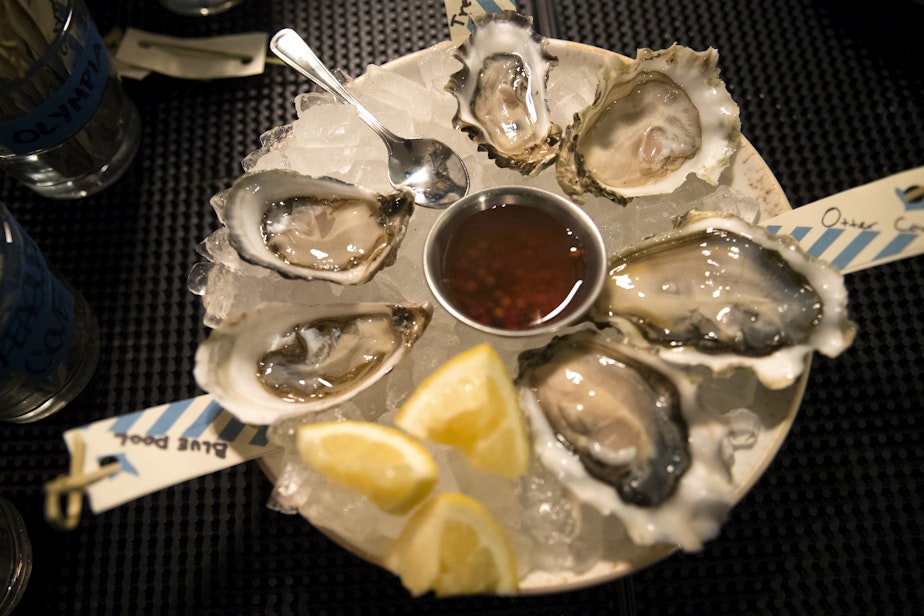The disgusting, and fascinating, case of the worm in the oyster

If you’ve shucked an oyster from Washington state recently, you might have noticed something new. Black blisters on the meat of the oyster.
Researchers are attributing many of these blisters to a parasite they’ve never seen before.
A warning if you’re sensitive: this story involves tiny worms, shellfish and unsolved mysteries.
You've probably heard of mud worms before — little parasites that can worm their way, literally, into an oyster shell. The worms can have devastating effects —they're blamed for the end of the oyster industry in places such as Australia and South Africa. For a long time Washington shellfish was thought to be spared that wormy fate.
But researchers with the University of Washington have discovered that Washington oysters do contain a kind of mud worm — one no one has ever seen before.
Science writer Carly Cassella reported on the story for High Country News.
She says that while we haven't seen these worms before, that doesn't mean they're new.
Sponsored
"It's not actually in any other scientific literature," Cassella said. "And the really cool thing is that these researchers found 1,000-year-old shells in Washington that also had the markings of mud worms. And so it suggests there could actually be a native species. And for some reason, it's now taking off."
These worms don't destroy the oysters. They actually live in the shell, not the oyster itself. So even oysters that have mud worms burrowed deep enough to create what look like blisters in the meat are still edible. They just won't taste great if you pop that blister by cooking the oyster in the shell, or not shucking the oyster properly.
Even though the oysters are edible, the blisters are still unsightly, and could still have an impact on the local shellfish industry.
But John Adams, owner of Sound Fresh Clams and Oysters in Shelton, Washington, said that's not his main concern.
"I think the narrative is far worse than the actual damage to the meat itself," Adams said. "It is unsightly. And it is a gross flavor if that blister becomes open, but, you know, most shellfish shuckers are very accomplished. They can open the oyster without impinging on that blister at all. And, again, if you're grilling oysters, just shuck the thing first and put your topping on it. You know, inspect the shell. The meat's the same as it always has been."
Sponsored
Adams said he's seen the parasites in his oysters — in fact Sound Fresh Clams and Oysters is one of more than 30 tribes and oyster farms working with researchers at the University of Washington to better understand the worms.
But Adams said other issues also need his focus.
"Knowing that the heat dome is going to occur every five to 10 years is something we just need to throw into the pot, another thing to plan for," he said. "But we are also in the middle of trying to figure out how to manage this market shift associated with Covid. Our market demand has shifted away from oysters and towards clams, which had left a lot of oysters on the oyster beds."
At the end of the day, Adams said there's not a lot he can do about the parasites. There's no known way to stop them from infecting oysters.
Instead, he asks that people focus on what they can do for the local agriculture industry as a whole.
Sponsored
"Every aspect of our food system is under stress right now," Adams said. "Just buy local, buy fresh and check your oysters before you grill them."





